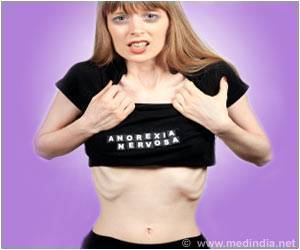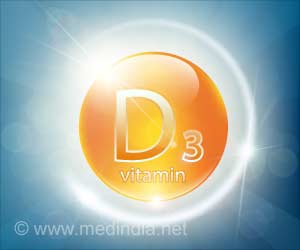Scientists have discovered two gene mutations one in each family that are associated with a higher risk of developing eating disorders.

"If you're considering two randomly discovered genes, the chance that they will interact is small. But, what really sealed the deal for us that the association was real was that the mutations have the same effect," says Michael Lutter, M.D., Ph.D., UI assistant professor of psychiatry and senior author of the study.
Overall, the study, published Oct. 8 in the Journal of Clinical Investigation, suggests that mutations that decrease the activity of a transcription factor -- a protein that turns on the expression of other genes -- called estrogen-related receptor alpha (ESRRA) increase the risk of eating disorders.
The challenge of finding genes for complex diseases
Anorexia nervosa and bulimia nervosa are fairly common, especially among women. They affect between 1 and 3 percent of women. They also are among the most lethal of all psychiatric diseases; about 1 in 1,000 women will die from anorexia.
Finding genes associated with complex diseases like eating disorders is challenging. Scientists can analyze the genetics of thousands of people and use statistics to find common, low-risk gene variations, the accumulation of which causes complex disorders from psychiatric conditions like eating disorders to conditions like heart disease or obesity.
Advertisement
Lutter and his colleagues were able to work with two such families to identify the two new genes associated with eating disorders.
In the new study, 20 members from three generations of one family (10 affected individuals and 10 unaffected), and eight members of a second family (six affected and two unaffected) were analyzed.
Two genes, one pathway
The gene discovered in the larger family was ESRRA, a transcription factor that turns on the expression of other genes. The mutation associated with eating disorders decreases ESSRA activity.
The gene found in the second family is a transcriptional repressor called histone deacetylase 4 (HDAC4), which turns off transcription factors, including ESRRA. This mutation is unusual in the sense that it increases the gene's activity –- most mutations decrease or destroy a gene's activity.
Importantly, the team also found that the two affected proteins interacted with one another; HDAC4 binds to ESRRA and inhibits it.
"The fact that the HDAC4 mutation happens to increase the gene activity and happens to increase its ability to repress the ESSRA protein we found in the other family was just beyond coincidence," Lutter says.
The two genes are already known to be involved in metabolic pathways in muscle and fat tissue. They also are both regulated by exercise.
In the brain, HDAC4 is very important for regulating genes that form connections between neurons. However, there's almost nothing known about ESRRA in the brain, although it is expressed in many brain regions that are disrupted in anorexia.
Lutter and his colleagues plan to study the role of these genes in mice and in cultured neurons to find out exactly what they are doing in the brain. They will also look for ways to modify the genes' activity, with the long-term goal of finding small molecules that might be developed into therapies for eating disorders.
They also plan to study patients with eating disorders and see if other genes associated with the ESSRA/HDAC4 brain pathway are affected in humans.
Source-Eurekalert















